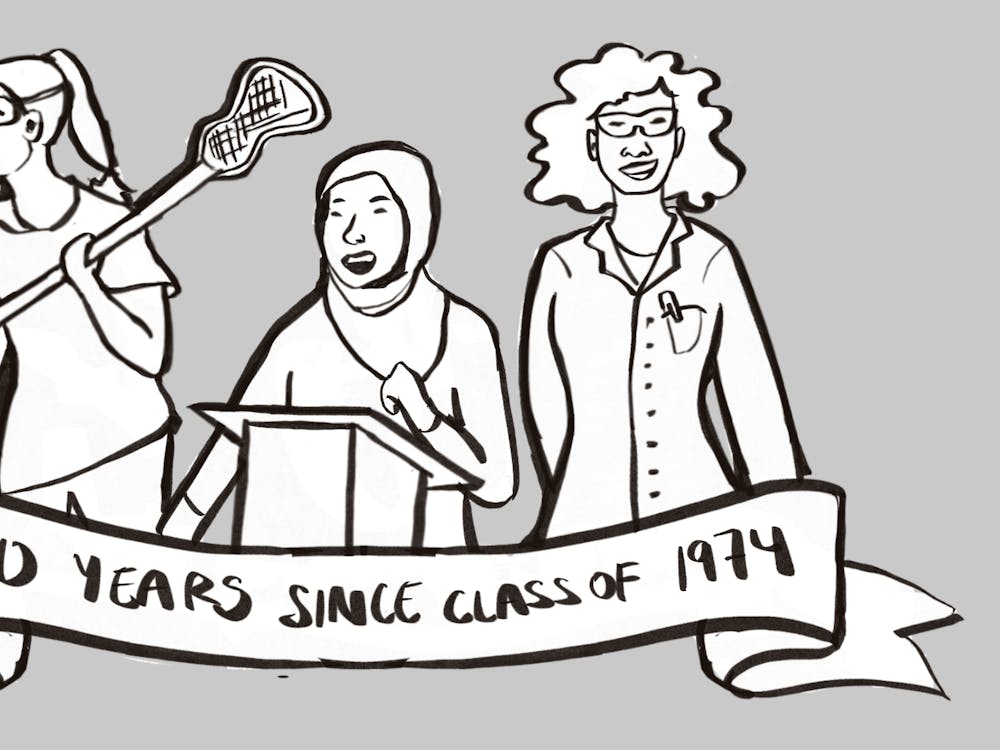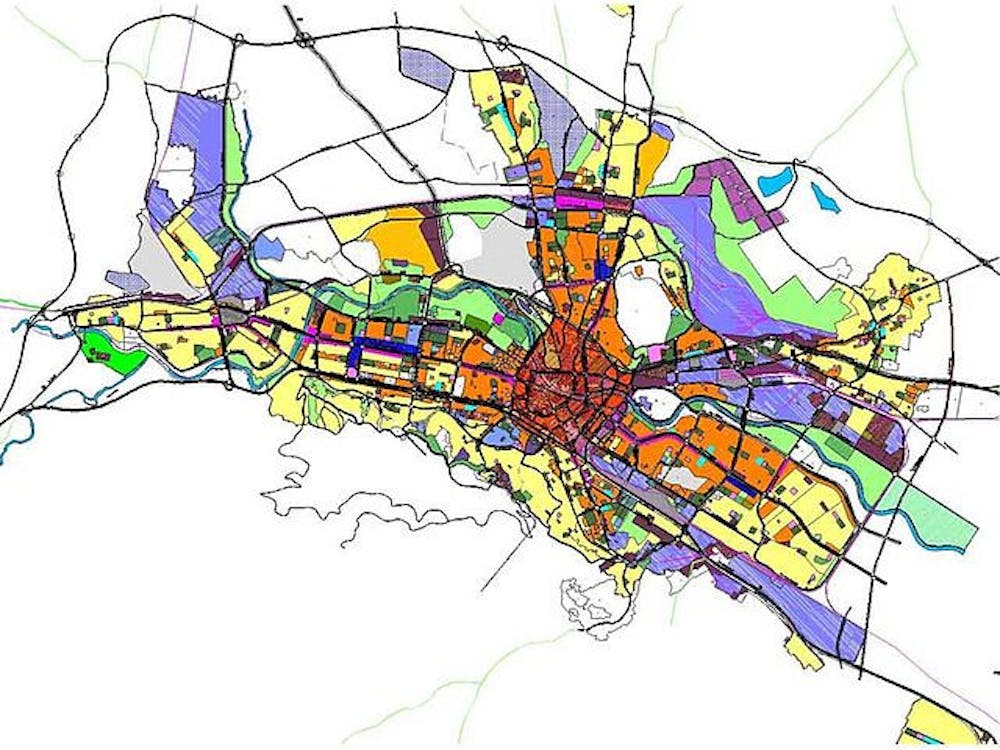The residents of Adams House in AMR II have introduced a revolutionary method of studying and doing their homework. Be it Biology, Chemistry, Calculus I, II, or III, Adams residents have decided to write it on the hallway walls. Visitors to the first floor hallway of Adams House have become accustomed to finding equations, explanations, diagrams, or step-by-step work done by and for roommates and friends, either left over from some earlier session or presently in use by a study group.
Although the top of the AMR II hallways feature textured, painted-white cinder blocks, on the bottom half they are finished with smooth, wide gray tiles that function perfectly well as whiteboards. One can use dry erase markers on them yet remove the markings with a paper towel or cloth, or clear the writing completely with Windex or some other hard-surface cleaner. This newfound feature lets students utilize surfaces which are dozens of feet long and three or four feet high, perfectly oriented for a student seated cross-legged on the hallway’s carpeted floor and conveniently located just a short walking distance away from the students’ rooms.
This state of affairs reigned for several weeks until, through the reports of the maintenance and cleaning staff, the relevant administrators discovered the practice and forbade it. The administrators claim is that writing on the walls is a form of vandalism and that such an act can not be allowed to take place inside the Hopkins dorms, and altogether their point is valid. Although some students were opposed to this conclusion based on the ease of removal of dry erase marker on the hallway’s tiled surface, I must agree wholeheartedly that the “Adams whiteboard system” could not continue unmodified.
However, I would like to propose a new system to the University: the installation of whiteboard surfaces in all or most of the hallways’ wall surface area throughout university housing. If enacted, my proposal may improve student quality of life, increase grades and performance, and encourage the formation of a more collaborative, communal, and creative atmosphere within the dorms and hallways of the institution. This atmosphere would instill an intellectual and scholarly attitude, as thoughts and ideas would occupy a more prominent place in the lives of the student body. The same or similar technology present in the Brody Learning Commons could be used to modify the hallways if economically feasible, or some adequate substitute could be researched. In all likelihood, students of the Whiting School would love to take on this engineering opportunity.
As stated, such a system is already in place within the Brody Learning Commons in the form of the several group study rooms whose walls can be written and drawn on. They are always in high demand and short supply because of their limited number and availability - clearly, these rooms are popular and well received. I believe the new hallways would be met with equally positive reactions and would provide far more positive benefits. More students could use the expanded study space.
Spontaneous ideas and creative thinking would arise more naturally, while all sorts of information and knowledge would pass more readily between members of the student body. Personal and work relationships could form between housemates based on this free flowing exchange of ideas. Both group studying and singular, personal review could take place anywhere at any time, entirely at the volition of the students. Additionally, this new hallway system would be a uniquely promotable and marketable component of the Johns Hopkins community experience.
Residents’ rooms in AMR II, although faced with the same cinder blocks as in the hallways, already include dedicated walls that may be personalized and used by the students in the same spirit. However, this feature is less directly useful for education and, if anything, stifles interaction in common spaces.
Granted, there is the potential for noise concerns. Considering the myriad sleeping schedules followed by Hopkins students, this collaboration could rise into an unbearable cacophony of studious uproar at all hours of the day. An honor code of respect and courtesy would clearly need to be cultivated for this whiteboard system to avoid that problem. Hopefully the the collective moral fiber and perception of respect would both be enhanced as a result of a this, thus complementing the aforementioned scholastic atmosphere with an ambience of courtesy.
I hope for discussion on, and welcome modifications to, this proposal. I hope the university administration and community seriously consider the merits of this system.
Nathan Bick is a freshman economics major from Washington D.C.






















Please note All comments are eligible for publication in The News-Letter.